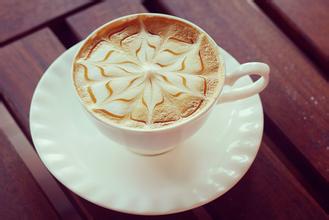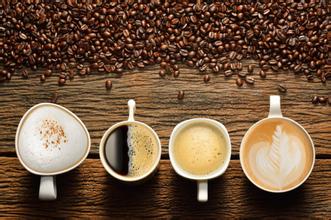Coffee knowledge | Coffee raw beans
To judge the quality of raw beans, first of all, it depends on whether its color is bright and consistent, and whether the particle size is similar. And then there is the time of harvest. The bags of coffee beans of many foreign brands are usually marked with "In-Season", which means that the coffee beans sold by the company are seasonal beans. Intellectuals are the season beans. With the passage of time, the moisture content in raw coffee beans will slowly disappear, the aroma will slowly dissipate, and the color will gradually change from turquoise to yellow or brown. Therefore, for some coffee practitioners and lovers only pay attention to the baking time is one-sided, not desirable. What is more important is the freshness of raw beans. Therefore, if you want to pretend to force berries in the future, you should ask, "where are the raw beans produced?" "if you ask me this, I will ask," Don't pretend to be forced. I don't know that berries sell intellectuals. I don't know that intellectuals are all In-season. "
In addition, mastering the characteristics of each variety is also a quality that coffee practitioners should have. Robusta is easy to distinguish because its subcategory is single, while there are several varieties under Arabica, each with its own special flavor and aroma, and beans grown at different elevations have different densities. The temperature of the baking point, the method of baking beans, and the focus of red beans are all different.
The following common varieties of coffee beans are listed for you:
Long beans (Long Berry): one of the original species of Arabica, the appearance of raw beans slender, Ethiopia's mocha, Yemen mocha are long beans.
Short bean (Short Berry): one of the original species of Arabica, the raw bean is round and short in appearance, and its representative coffee is also Ethiopia's mocha coffee and Yemen's mocha coffee.
Typica: similar to long beans, the shape is oval, and the bean body is thin from the side. even if the altitude of the planting area is different, the thickness of the side of the raw bean will not be too different.
Bourbon: the shape of raw beans is round and small. The improved bourbon seed particles are large and thick. From the side, the raw beans grown at low elevations are thinner than those at high elevations.
Kaddura (Caturra): similar to the appearance of the bourbon species, it is difficult to distinguish. The short part of the tail of Kaddura is warped than the bourbon. Round and slender are its appearance characteristics.
New World (Mundo Novo): similar to Bourbon in appearance, both are round, the New World is flatter and the central part is flatter.
Catuai: the cross between Kaddura and the New World, with the slender, round body of Kaddura and the flattened New World, but with a slender tail.
Catimor: a new hybrid between Kaddura and Dimo, having a large, thick, slender tail.
Kent: the representative of Indian coffee, the cross between Itsuka and Luodou, oval in appearance but round in shape.
Pacas (Pacas): the bourbon variant looks a lot like Kaddura, but from the side, Pacas is a little thinner than Bourbon.
Canephora: Robusta stands for large, thick, straight-line center.
SL28: one of the improved beans in Kenya. Resistant to leaf rust and high yield. It is a new variety based on bourbon.
In addition, when we look at every kind of raw beans, whether they are fine beans or commercial beans, there will be some ugly beans more or less. In fact, they are not like "crooked melons and bad dates", but sweeter and tastier, but the chief culprit that harms the flavor and aroma of coffee. They are called Defected beans.
Defective beans are caused by a variety of reasons, including harvest, processing, drying and storage. No matter how expensive the beans are, there will be defective beans, which the baker has to pick before baking. For them, it is their duty and responsibility to master every kind of defective beans.

Important Notice :
前街咖啡 FrontStreet Coffee has moved to new addredd:
FrontStreet Coffee Address: 315,Donghua East Road,GuangZhou
Tel:020 38364473
- Prev

World coffee knowledge explanation:90+ coffee label represents the meaning
Ninety + Coffee comes from American boutique coffee creator and supplier: Ninety Plus Coffee. Just a few years after its founding in 2006, 90 has made their name known to coffee makers worldwide, and since its first coffee in 2007 it has been a prized showcase for coffee connoisseurs and competitors.
- Next

Health care can be as convenient as drinking coffee.
On September 1, the first China Medical Materials Association Health Bank Guangdong Station came to Zhongshan Zhongzhi Pharmaceutical Group, the second destination of the trip. In a short period of two days, 10 editors from 8 media across the country visited Zhongshan Zhongzhi Pharmaceutical headquarters, Zhongshan Zhongzhi University Pharmacy headquarters and the national key research laboratory of broken wall slices. The media praised the free delivery of medicine at Zhongzhi University Pharmacy on the afternoon of September 1.
Related
- Beginners will see the "Coffee pull flower" guide!
- What is the difference between ice blog purified milk and ordinary milk coffee?
- Why is the Philippines the largest producer of crops in Liberia?
- For coffee extraction, should the fine powder be retained?
- How does extracted espresso fill pressed powder? How much strength does it take to press the powder?
- How to make jasmine cold extract coffee? Is the jasmine + latte good?
- Will this little toy really make the coffee taste better? How does Lily Drip affect coffee extraction?
- Will the action of slapping the filter cup also affect coffee extraction?
- What's the difference between powder-to-water ratio and powder-to-liquid ratio?
- What is the Ethiopian local species? What does it have to do with Heirloom native species?

